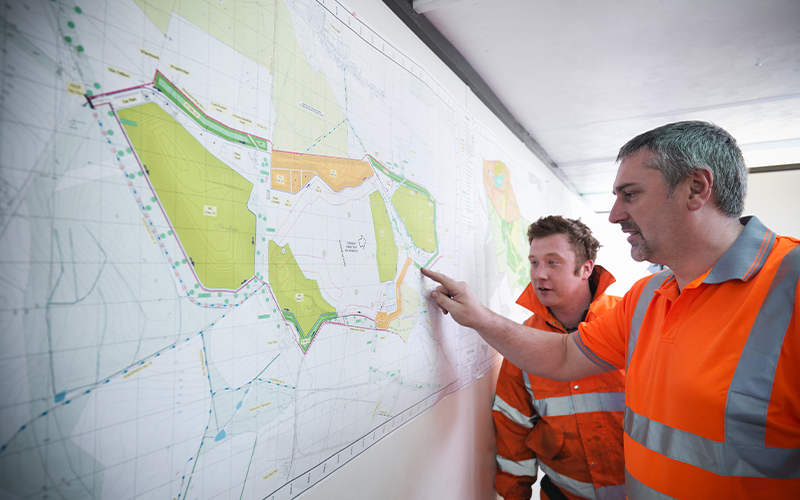Geospatial Data Services
GIS and telecom: The alliance you need to nurture
Modern technology has brought cartography into the 21st century with the development of comprehensive digital geographic information systems (GIS). These systems store, manage, and analyse a wide variety of geographical data, enabling us to accurately map and visualise geographic positions on the earth’s surface. Incorporating vast amounts of spatial and attribute data, modern GIS in telecom and network services find applications in various fields, including mapping, urban planning, telecom services, the management of utilities and natural resources, transportation planning, environmental impact analysis, agriculture, disaster management, geology, and so much more. Most businesses and industries today use GIS data in some form or another to help with decision-making and crafting strategies. We’re going to discuss the growing number of use cases for geospatial data in the telecommunications industry.
As telecom companies look towards deploying the latest technologies and the next generation of high-speed networks, geospatial data is an invaluable tool for the sector. It offers real-time information to guide strategic planning and efficient deployment of these networks. Data applications for geospatial enterprise solutions for telecoms industry include creating accurate, up-to-date maps and optimising asset locations to ensure efficient asset installation and maintenance and identify faults along the network. Access to detailed GIS data at the planning stage can guide telecom providers towards building their networks at appropriate locations as well as reduce construction costs.
Besides using GIS data to guide the development of telecommunications infrastructure, geospatial enterprise solutions for telecom providers can help these companies monitor business metrics, identify trends and patterns in the industry, predict future traffic patterns based on the current infrastructure, and offer their customers new and innovative services. Let’s take a closer look at the impact of GIS on various aspects of the telecom industry and explore how telecommunications companies rely on geospatial information to make data-driven industry decisions.
Engineering new wireless networks
With the advent of new wireless technologies such as 5G networks, cellular service providers that have already expended capital to acquire 3G and 4G licences are now scrambling to find cost-effective ways to roll out the new tech while still maintaining their current network infrastructure. Designing an all-new network is highly time-consuming and resource intensive as it involves detailed planning and testing. Telecom companies can streamline the planning and design process and reduce costs by using geospatial data and GIS mapping to gain a better understanding of the service area and conduct various analyses and tests before implementation. Access to GIS data also makes it possible for telecom companies to better understand the terrain, topography, and population density in far-flung rural regions. This allows them to plan expansion of their services in these areas expeditiously and cost-effectively.
Maintaining existing telecom infrastructure
Insights gleaned from GIS data can simplify the maintenance and operation of an organisation’s existing telecom infrastructure by providing access to accurate and up-to-date service and operational data. GIS mapping allows telecommunication network providers to organise all the components of their network, including towers, splice points, cables, and ducts, by location. This makes it easier for field teams to track service dates, maintenance records, and asset inspections, as well as maintain notes for future work in one centralised location.
Conducting market analysis
Telecom companies can use GIS to track and compare consumer behaviour, lifestyle, and preferences over a region and craft customised market strategies. Market analysis based on GIS data can equip telecom providers to identify new opportunities, track and analyse sales performance, monitor consumer opinions, and understand market demand.
Providing excellent customer service
By moving customer data such as location and network information to GIS software, telecom providers’ customer service reps can organise customer relationship management tasks based on the region and resolve issues quickly. GIS mapping informs the representatives of the geospatial relationships between their resources and facilities and enables them to provide swift and efficient customer service.
For organisations on the digital transformation journey, agility is key in responding to a rapidly changing technology and business landscape. Now more than ever, it is crucial to deliver and exceed organisational expectations with a robust digital mindset backed by innovation. Enabling businesses to sense, learn, respond, and evolve like living organisms will be imperative for business excellence. A comprehensive yet modular suite of services is doing precisely that. Equipping organisations with intuitive decision-making automatically at scale, actionable insights based on real-time solutions, anytime/anywhere experience, and in-depth data visibility across functions leading to hyper-productivity, Live Enterprise is building connected organisations that are innovating collaboratively for the future.
How can Infosys BPM help?
Infosys BPM has been providing geospatial data solutions to the telecommunications industry to improve resource management, infrastructure determination, and outage prediction by efficiently collecting, storing, processing, integrating, managing, analysing, and distributing map data.






